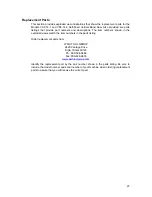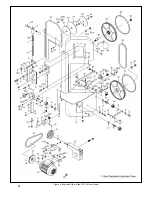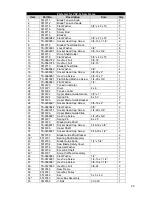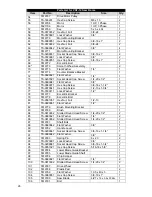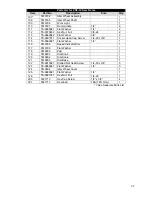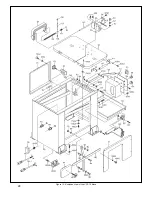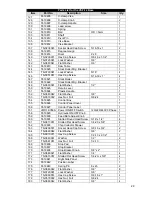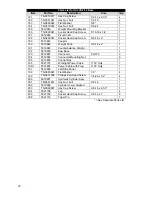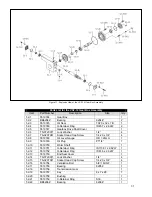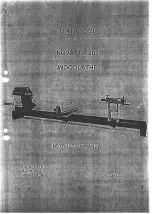
16
Service and Maintenance
Adjustments
The efficient operation of the band saw is dependent upon the condition of the saw blade.
If the performance of the saw begins to deteriorate, the first item that you should check is
the blade.
If a new blade does not restore the machine’s cutting accuracy and quality, refer to the
troubleshooting guide (or the blade manufacturer’s guide) for conditions to consider and
adjustments that can be made to increase the life of the blade.
To change the blade, refer to the blade changing procedures in the Blade Selection
section of this manual.
Blade Tracking Adjustments
Blade tracking has been tested at the
factory. Adjustment is rarely required
when the blade is used properly and if
the blade is correctly welded. (Refer to
Figure 7 for location of blade tracking
adjustment setscrew).
1. Place the saw frame in its
rearmost position by pushing
down on the saw frame release
lever (Figure 3 Item 2) and lock
it in place by turning the saw
frame release knob (Figure 3
Item 1.2) clockwise.
2. Make sure the blade is properly
tensioned.
NOTE: Keep proper tension on
the blade at all times using the
blade tension adjustment.
3. Loosen the two bottom bolts
(Figure 6, Item B) on the wheel
slide.
While performing the following
steps, keep the blade from
rubbing excessively on the
shoulder of the wheel.
Excessive rubbing will
damage the wheel and/or the
blade.
4. Start the saw. Turn the setscrew
to tilt the idler wheel until the
blade is touching the shoulder
of the idler wheel.
5. Turn the setscrew (Figure 6,
Item A) so the blade starts to
move away from the shoulder of
the wheel; then immediately
turn the setscrew in the other
direction so the blade stops;
then moves slowly towards the
shoulder.
Figure 6: Blade Tracking Adjustment






















